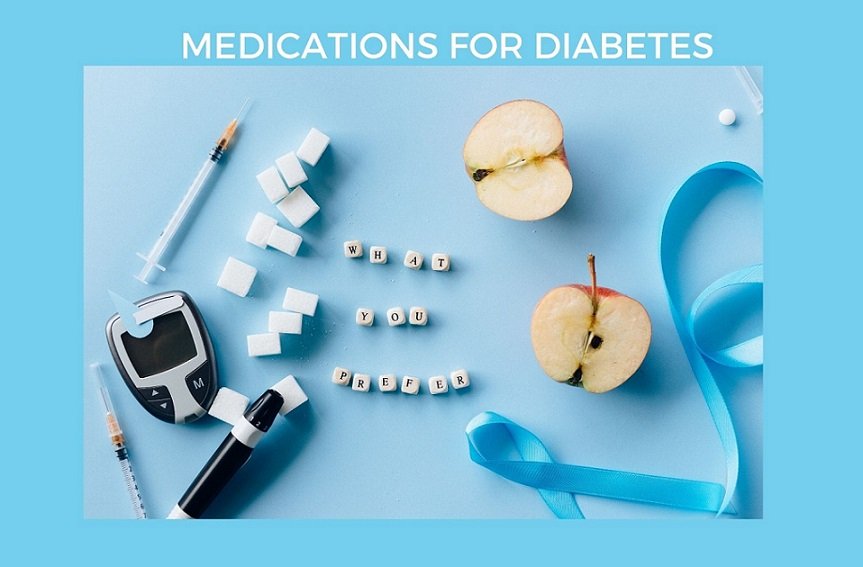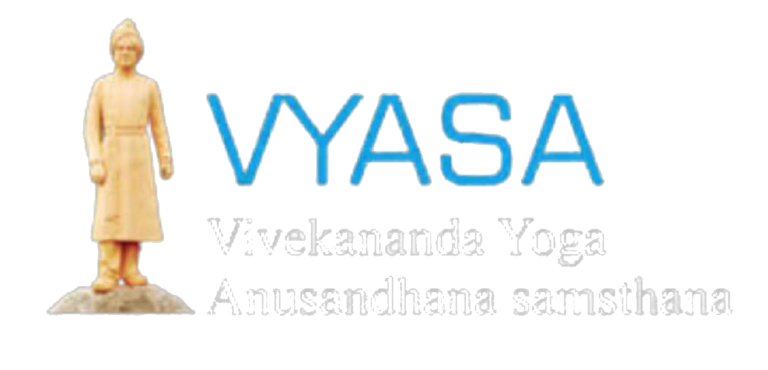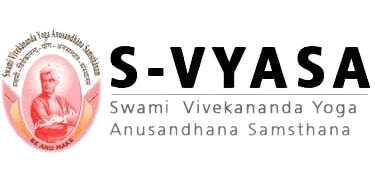Medications for diabetes
By Dr. Suchetha Hedge | April 30, 2022
Diabetes is a condition where the sugar level in the blood exceeds the normal limits. Here the body’s ability to produce or respond to the hormone insulin is impaired. Among the most prevalent types of diabetes, type 1 diabetes is caused due to the body’s inability to produce insulin and type 2 diabetes is caused mostly due to cells becoming insensitive to insulin. Type 1 diabetes has no known preventable measures other than providing insulin externally. Type 2 diabetes can be prevented and managed with diet and lifestyle modifications.

Medications
Diabetes management is mainly about keeping the blood sugar levels normal. This can be done through dietary changes, maintaining healthy weight, burning out excess calories through exercise and medications. A regular blood glucose monitoring for all individual who are obese, or with genetic predisposition or above the age of 40 will surely help in correcting the condition at a pre-diabetic phase.
Management of diabetes can be done at various levels
- Lifestyle modification – Since diabetes is a metabolic disorder the management of the earlier stages can be done easily through dietary changes and exercise to keep the blood glucose under control. Reducing the overall carbohydrate intake, increasing dietary fibres, regulating meal time and quantity will allow the body to have ideal blood glucose throughout the day.
- Weight management – Reducing the body weight can prevent and delay the onset of diabetes from the prediabetic phase.
- Medications – Most medication targets lowering of blood sugar levels so that an acceptable level of glucose level is maintained in the blood which can prevent further complications to vital organs such as the kidney or the eyes.Type 1 diabetes where there is less or lack of insulin produced in the body, the treatment requires replenishment of insulin through supplemental insulin as medication.Type 2 diabetes which is the most common among the population the treatment can be varied according to the individual requirement. It is generally treated with medications that are taken orally. In some cases they may eventually require injectable treatment with insulin and other medications.Common medications used in Diabetes are as follows
- Sulphonylureas – (glimepiride,glipizide,glyburide) they lower the glucose by making pancreas release more insulin.
- Biguanides – ( ex – Metformin ) helps in reducing the glucose production from liver. Also improves the working capacity of insulin and slows down conversion of food into sugar.
- Thiazolidinediones (ex – pioglitazone) makes the insulin work better by allowing more glucose to the muscles, fat and liver.
- Alpha-Glucosidase inhibitors (ex-Acarbose, miglitol) delays the breakdown of carbohydrates and reduces the glucose absorption in the intestine. Slows down the digestion of starches.
- Meglitinide (ex-Repaglinide,nateglinide) makes the pancreas to release more insulin
- DPP-4 inhibitors ( ex-Sitagliptin, saxagliptin, linagliptin, alogliptin) helps pancreas to release more insulin after meals and also lower the amount of glucose released by the liver.
- SGLT2 inhibitors (ex-canagliflozin,dapagliflozin,empagliflozin) Makes the kidney excrete the extra sugar from the body.
- Bile acid sequestrant (ex-Colesevelam) They lower both the cholesterol and blood sugar levels in patients.
- Dopamine agonist (ex-bromocriptine) lowers the amount of glucose released by the liver.
- Education – Educational programs for adults suffering from diabetes on early detection, self care, management and support through government organisations.
Ayurvedic perspective of diabetes
Diabetes mellitus can be correlated to the Madhumeha described in Ayurveda. This is one among the 20 varieties of Prameha or urinary disorders. The dosha involved here is Vata. The classical symptoms of polyuria-polydipsia-polyphagia are observed in Madhumeha. It is described as a disease which has to be managed and cannot be fully cured. The two types of treatment mentioned in texts depend on the Prakruti of the individual.
- Apatarpana – Suggested for obese -through herbal medications, regulated fasting, and panchakarma therapies – removes the excess fat and improves metabolism at the tissue level.
- Santarpana – Suggested for the underweight and people with depleted tissues – providing nutrition to rebuild the body tissues, increasing the immunity, preventing damage of tissue and help in healing – Anuvasna Basti (oil enema), Nourishing massages, administration of herbs such as ashwagandha, Vidari, shatavari etc
Mode of treatment or Chikitsa is done through Shodhana(cleansing) and Shamana(pacifing) Shodhana chikitsa includes vamana, virechana and basti depending on the doshas involved. Since vata dosha is involved in the pathogenesis of madhumeha, basti is commonly recommended.
- Mustadi yapana basti
- Panchatikta kashaya niruha basti
- Pramehahar Asthapana basti
Shamana chikitsa is done using the Ahar (diet), Vihar(lifestyle), Aushadha(oral medications)
Usage of single herbs or in combination in daily lives which have Tikta rasa(bitter) such as-
- Haridra (turmeric), Vijaysar
- Guduchi(Giloy)
- Amalaki(Indian gooseberry)
- Jambu fruit
- Bitter gourd
- Neem
- Fenugreek
- Bel fruit
- Triphala
- Amla juice with turmeric powder
Ayurvedic formulations used in common
- Vasant Kusumakar Rasa
- Brihad Vangeshwar Rasa
- Trivanga bhasma
- Shiva Gutika
- Chandraprabha vati
- Shilajitwadi vati
- Nyagrodhadi churna
- Darvyadi kwath, Salsaradi kwath
- Lodhrasava, Madhvasav
Different ayurvedic formulations are used by the practitioners to target the balancing of vitiated doshas and dhatus in the body.
Yoga and naturopathy in diabetes
The treatment aims at stimulating the pancreatic cells to produce optimum amount of insulin and to reduce insulin resistance.
Treatment methods in naturopathy include fasting therapy, hydrotherapy, mud therapy, massage and sun therapy.
Yogic procedures like kunjal, kapalbhati, agnisar and nauli are recommended for diabetes management. Suryanamaskar has an excellent effect on reduction of blood sugar levels.
Asanas like tadasana, katichakrasana, pavanamuktasana, sarvangasana, halasana, ustrasana, Gomukhasana, Dhanurasana, shalabhasana are suggested.
Pranayama and meditation helps in reducing body stress and repairing and replenishing the cells in the body.
All of these along with good food choices will keep the body in a healthy state and aid in better management of diabetes.
Article By :
Dr. Suchetha Hedge





